The 21st Century has seen innovations in technology like never before. From self-driving cars to Bluetooth and 3D printing to fibre optics, these rapid advances are impacting people’s lives and workplaces in a way that was not thought possible only a decade ago.
Virtual Reality (VR) joins that list, a fast-growing immersive technology pushing the boundaries of human experience.
Emerging in the 1970s and establishing itself through the entertainment and gaming industry in the late 1980s, its use is being adopted across education, healthcare, business, manufacturing, architecture, and design.
With the global market expected to grow to 12.19 billion USD by 2024, we examine virtual reality in architecture, the benefits it brings to architects and those in the design and construction cycle including clients and builders, and its future potential.
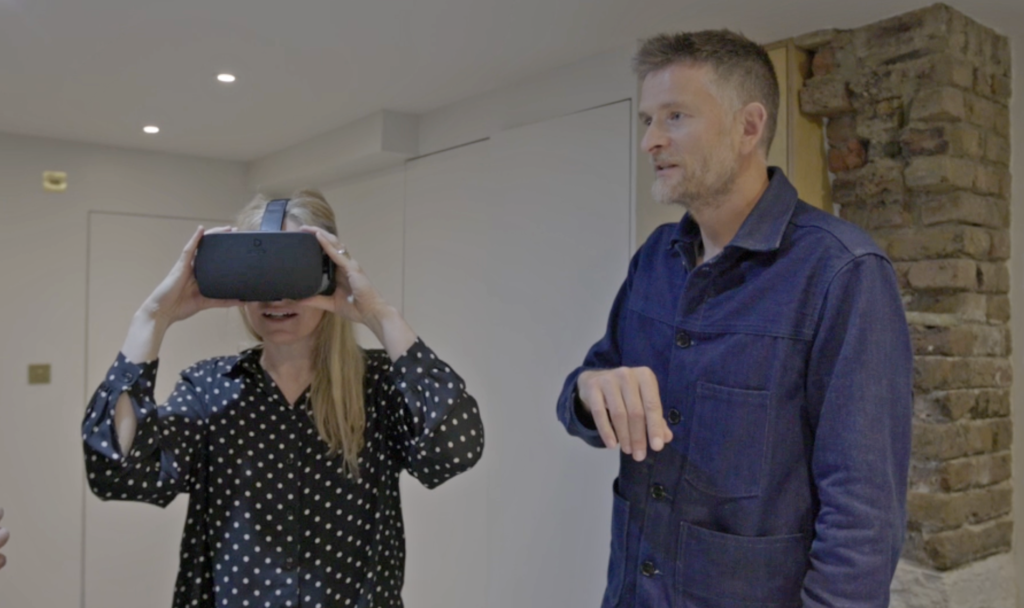
Emergence of VR in architecture
We can trace the early adoption of VR applications for architecture back to the mid- 1980s as this was in line with early advancements in VR research and hardware.
It wasn’t until 2014 with the launch of Occulus Rift alongside improvements in accessibility and affordability such as Building Information Modelling (BIM) software advances like BIMx and cost-effective VR head-mounted displays like Google cardboard both of which we use here at RISE Design Studio, that it entered the architectural mainstream.
Up until this point the traditional methods of floor plans, 3D models and renderings were the ‘go to’ for communicating design ideas and concepts with clients. However, these presented pitfalls in conveying the true vision of the architect to the client, resulting in a lack of technical understanding, delayed feedback, frustration, and sometimes miscommunication.
VR’s ability to transport the user into an interactive 3D environment where they could explore a virtual representation of every room and floor of a building meant that architects could now immerse the client into the design at every stage, offering a true experience and deeper understanding from the beginning.
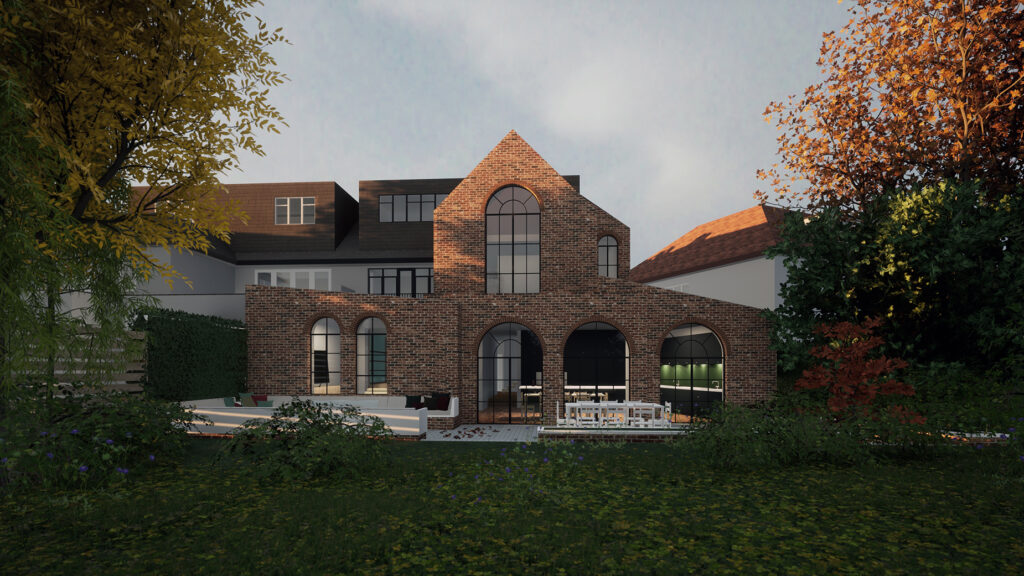
Why VR is the architectural client game-changer
Think about walking into a room of a newly designed building, experiencing the space, the natural flow of the interior, the scale of the rooms, opening doors and windows, now imagine doing that before building starts. This is what VR brings to the client journey, the ability to experience and understand a building before construction even begins.
From initial design mock-up to finalising finishing touches, the use of VR can occur at every stage of a project to help a client visualise the complete design. Thanks to its powerful immersive yet user-friendly capabilities it helps to build confidence in the scope and feel of the project, achieving buy-in and engagement early on.
It is this which offers real benefits to all involved throughout the process. The ability to convey what a building will feel and look like from the beginning allows everyone to understand the capabilities of a project.
This is invaluable when clients and sometimes contractors struggle to visualise the result and see how a design will work when viewing it through traditional design approaches.
Together this to-scale detailed representation helps to convince stakeholders of the integrity and value of the design, makes them more confident, allows for accurate and effective feedback and better use of time, and makes the entire process more efficient in cost terms and man hours.
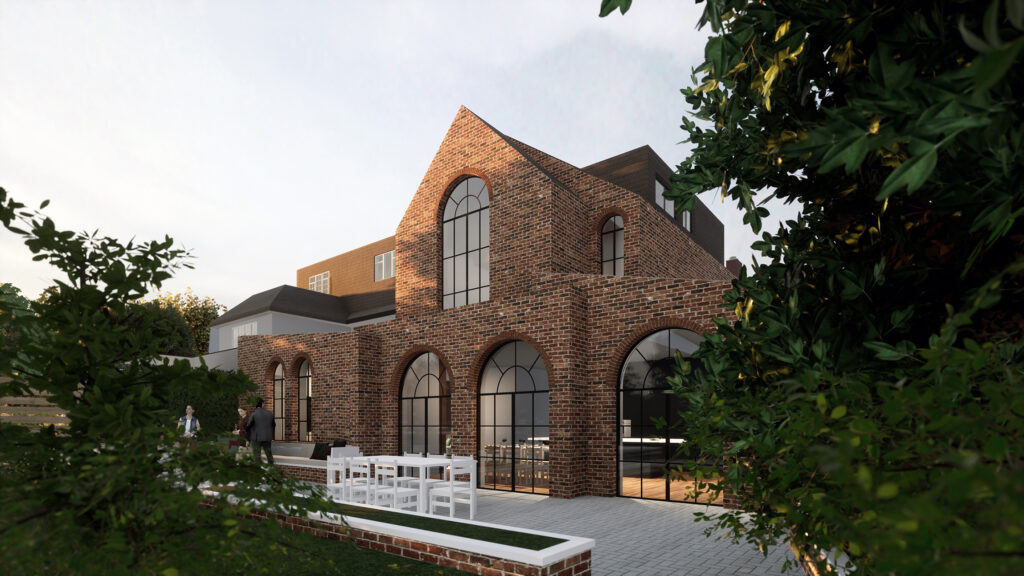
VR the key to architectural collaboration
Many industries now use VR to collaborate when team members and clients are spread over remote locations.
In the field of architecture which involves a wide range of moving parts and individuals across many industries including the client, engineers, technical consultants, construction managers and specialist contractors, it is proving to be as effective.
VR collaborative tools such as Arkio and Trezi allow each individual with different perspectives and skills to experience the design seamlessly in a 3D environment, bringing the building to life no matter the location and losing nothing in translation.
They can engage in co-ordinated and in-depth discussion; mark-up designs or leave voice notes with feedback; meet within the virtual building to go through materials, designs for different floor spaces, or make real time changes such as the position of fire sprinklers and exits, the wall colour, lighting, and furniture.
BIMx is incredibly useful at RIBA Work Stage 4, of the planning, design and build process, the technical design stage prior to the project going out to tender for construction. It allows the architect to develop and refine the detail design more efficiently as all the components can be reviewed digitally in 3D and any troublesome areas, risks, or clashes with the mechanical and electrical services (supply pipes, waste, and ducting) as well as structure are identified and minimised.
Queries are addressed and resolved quickly with all relevant parties, either through the use of 3D stills or a video walkthrough, and the tender process is therefore much smoother.
Such effective collaboration and sense of presence between stakeholders from design through to build, negates wastage, costly design changes or planning issues, which can sometimes occur throughout a project.
It helps to identify, assess, and solve problems before construction begins saving all parties money as well as valuable time, and ensuring that the entire process is efficient, and everyone is satisfied.
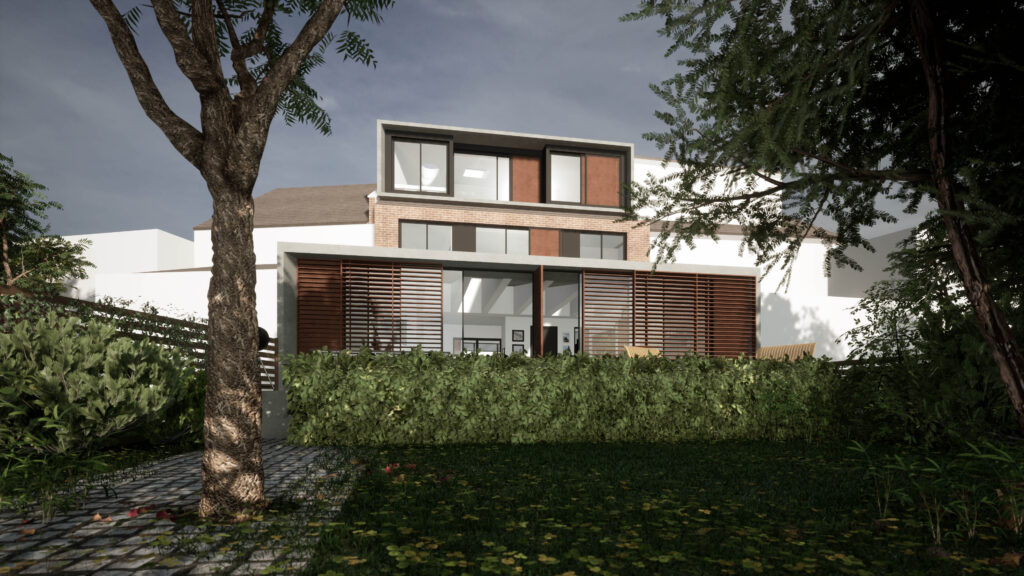
Incorporating VR at RISE Design Studio
Early adopters of VR, here at RISE Design Studio we used ArchiCAD and VR via the BIMx app on smartphones on our recent Light House project in South London.
We are committed to a rigorous approach on all our projects and as discussed previously, the technology allowed us to work out fundamental technical and design elements in comprehensive detail prior to work starting on site, this included:
– the positioning of the Mechanical Ventilation Heat Recovery ducting routes
– the best position for the Solar PV and battery, and the cabling
– the positioning of drainage pipes from the bathrooms and the utility
– the Sun Shadow path for window openings
All of which meant we were able to design and deliver the result the clients envisioned as well as work collaboratively and with enhanced clarity with each of the specialist contractors.
As with all fast-moving technology, VR continues at pace opening opportunities for those working in architecture and design, as well as everyone involved in the life cycle of a building.
Its capabilities to transport not only the client but consultants, contractors, and engineers, into an immersive real-time environment means that it offers endless possibilities for how projects are created, communicated, managed, and delivered.
In an industry in which innovation and evolution are fundamental to creative growth, embracing such technology would appear now to be essential as opposed to a ‘nice to have.’
At RISE Design Studio, we have considerable experience utilising the most advanced software including BIMX Hyper Model to deliver high quality projects with improved visualisation, productivity, increased delivery speed and reduced costs.
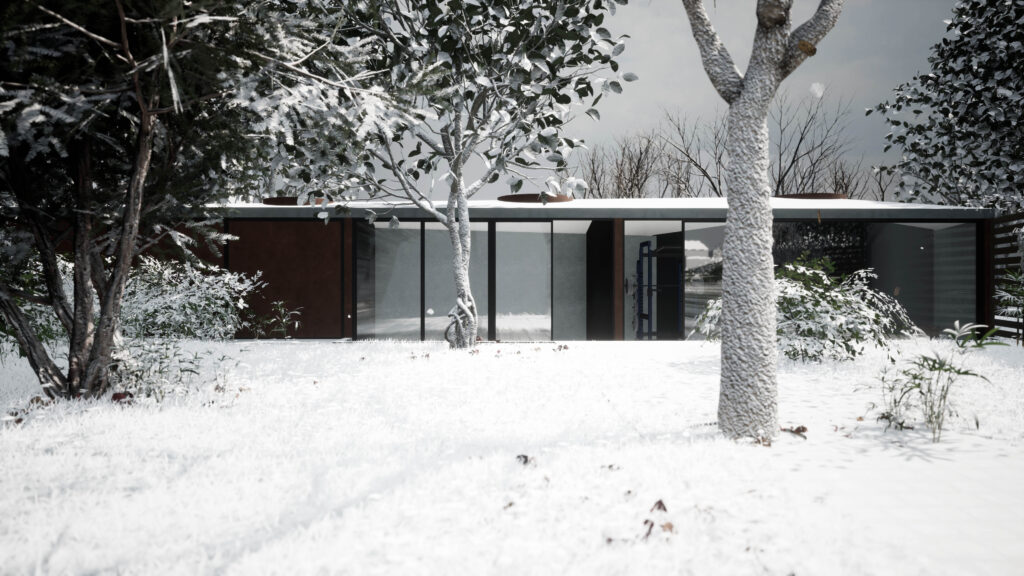
Frequently Asked Questions
1. What is Virtual Reality (VR) in architecture?
Virtual Reality in architecture is the use of immersive technology to create a lifelike, three-dimensional representation of architectural designs. This allows architects, clients, and builders to explore and interact with a virtual building at every stage of the design and construction process.
2. How did VR become a tool in architecture?
VR began to be utilized in architecture around the mid-1980s, alongside advancements in VR research and hardware. It wasn’t until 2014, with the advent of more affordable VR technologies such as Occulus Rift, BIMx software, and Google cardboard, that VR entered the architectural mainstream.
3. What benefits does VR bring to architecture?
VR offers numerous benefits in architecture, such as improved communication of design ideas, enhanced client understanding, and early stakeholder engagement. It allows clients to experience a building even before construction begins, offering a deeper understanding of the project and fostering confidence in the design. VR also optimizes collaboration, time efficiency, and cost management throughout the design and construction process.
4. How does VR facilitate architectural collaboration?
VR serves as an effective tool for architectural collaboration, especially in projects where team members and clients are in different locations. Collaborative tools like Arkio and Trezi allow stakeholders to experience the design in a 3D environment, discuss designs in-depth, leave feedback, and make real-time changes, enhancing the overall efficiency of the project.
5. What’s the role of VR in the client journey within architectural projects?
VR significantly enhances the client journey in architectural projects. It allows clients to walk through a newly designed building, experiencing the space, scale, and layout even before construction begins. This immersive experience helps clients visualize the complete design, fosters early engagement, and builds confidence in the project.
6. How does VR improve communication in architecture?
VR allows for a more realistic and interactive representation of architectural designs, which can be a game-changer in terms of communication. Traditional methods such as floor plans and 3D models can sometimes fail to convey the architect’s vision completely. VR helps overcome this issue by providing a to-scale, detailed 3D environment that can be explored and interacted with, ensuring a more accurate understanding of the design.
7. What are the cost and time benefits of using VR in architecture?
Using VR in architecture can lead to significant cost and time savings. By allowing stakeholders to identify and resolve potential issues before construction begins, VR reduces the risk of costly design changes, planning issues, or wastage. It also helps to streamline the design and review process, making it more time-efficient.
8. How is VR used at RISE Design Studio?
At RISE Design Studio, VR is incorporated through ArchiCAD and the BIMx app on smartphones. This technology has been used on recent projects to work out fundamental technical and design elements in comprehensive detail prior to work starting on site.
9. Does VR have a future in architecture?
Absolutely. VR is an innovative technology that offers limitless possibilities for architectural creation, communication, management, and delivery. As it continues to evolve, it is expected to play an increasingly important role in architecture and construction.
10. How does VR contribute to the life cycle of a building?
VR plays a significant role throughout the life cycle of a building. From the initial design stages to the final construction, VR allows for immersive visualization, interactive collaboration, and effective problem-solving. By offering a realistic, 3D representation of the building at every stage, VR ensures that all involved have a clear understanding of the project, leading to a more efficient and successful construction process.
If you would like to talk through your project with the team, please do get in touch at mail@risedesignstudio.co.uk or give us a call on 020 3290 1003
RISE Design Studio Architects company reg no: 08129708 VAT no: GB158316403 © RISE Design Studio. Trading since 2011.



